Crazy Horse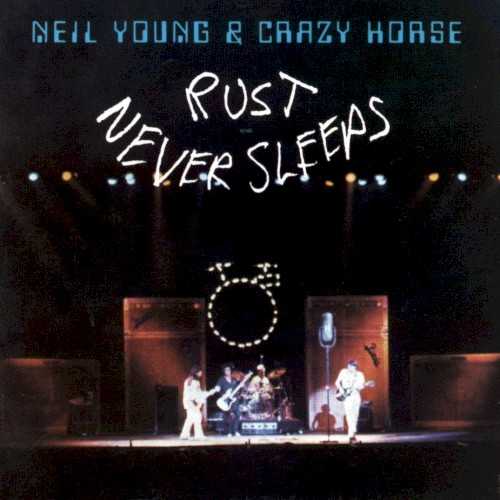 | ||
| Allmusic Biography : Out of all the backing bands Neil Young has recorded and performed with during his long and illustrious career, the best-known of the bunch (and perhaps one of the greatest garage rock bands of all time) remains Crazy Horse. The bands roots lay in the obscure early 60s doo wop band Danny & the Memories, which contained future Crazy Horse members Danny Whitten, Billy Talbot, and Ralph Molina, among others. Although all three would later play instruments in Crazy Horse, the trio focused solely on vocals for this early band, as the group relocated back and forth from the East and West Coasts. After finally settling down in Laurel Canyon in 1966, the members picked up instruments (Whitten the guitar, Talbot bass, and Molina drums) and formed the Rockets. Joining the trio were additional members Bobby Notkoff (violin), and two other guitarists, Leon and George Whitsell, who all played on the sextets one and only record, 1968s self-titled debut. Shortly after the albums release, Whitten and Talbot met Neil Young, who had just left Buffalo Springfield and was about to launch a solo career. Young jammed with the Rockets at a gig at the famed Whisky A Go-Go, and immediately asked Whitten, Talbot, and Molina to play on a few new songs hed written -- "Down by the River," "Cowgirl in the Sand," and "Cinnamon Girl." The trio accepted, playing on the three aforementioned songs and several others for what would become Youngs sophomore effort, 1969s classic Everybody Knows This Is Nowhere, resulting in the trio breaking up the Rockets to sign on with Young full-time, under the new name Crazy Horse. The album established both Young and Crazy Horse as one of the most promising new rock bands, as he enlisted the band once again to play on his third solo release, 1970s After the Gold Rush. But at the same time Young joined up with Crazy Horse, he accepted an invitation to team up with Crosby, Stills & Nash. With extended periods of time between playing with Young, Crazy Horse inked their own recording contract, resulting in their 1971 self-titled debut. Although the record failed to match the success of their work with Young, it turned out to be an inspired effort (as Grin guitarist Nils Lofgren and renowned producer/pianist Jack Nitzsche guested on the album) showing that the group was not merely Youngs backing band. But just as their own recording career began, Whitten became addicted to heroin, which hampered his talents and desire to play with the band, resulting in his leaving by 1972. Crazy Horse continued on with a revolving door of replacement members taking Whittens place for a pair of lackluster albums in 1972 -- Loose and At Crooked Lake. As Crazy Horses career appeared to hit a skid, Youngs career continued to flourish as he issued the biggest hit of his career, the mellow country-rock classic Harvest, the same year. When Young heard about Whittens deteriorating condition (Young wrote "Needle and the Damage Done" for him), he wanted to help out his old friend and asked Whitten to be part of his touring band. But when Whitten proved to be too far gone during rehearsals, he was fired. On the same night he left Young and the band (November 18, 1972), Whitten overdosed and died. Devastated, Young carried on with the tour, but reconvened with the surviving members of Crazy Horse by the summer of 1973, working on a set of dark songs hed written about the seedier side of life. The band toured Europe later in the year (with Lofgren back on board) and recorded these new compositions, which wouldnt see the light of day until 1975, when the classic album Tonights the Night was finally issued. The same year, the group named their official replacement for Whitten, newcomer Frank "Poncho" Sampedro, as the newly reinstated Neil Young & Crazy Horse issued their next release, Zuma, following it up with 1977s American Stars N Bars, and playing on a few tracks for Youngs largely 1978 country effort, Comes a Time. Amid the flurry of recording, Crazy Horse managed to issue a fourth album on their own, 1978s Crazy Moon, which featured Young guesting on a few of the tracks and was easily their finest and most-focused effort since their debut release seven years earlier. But the best was yet to come -- Young had thought up a surreal theatrical piece to accompany another new set of songs hed pen (half were acoustic, the other half were pure hard rock), which featured roadies coming on-stage dressed like Jawas from the movie Star Wars, and the band was dwarfed by oversized speaker cabinets and other props. The ensuing tour was one of Youngs finest, as the shows were recorded on both tape and film, resulting in 1979s classic Rust Never Sleeps, as well as a movie of an entire show from the tour (the film was also titled Rust Never Sleeps, while its soundtrack was issued under the name Live Rust). Although Young took a three-year break from the concert stage afterwards, Crazy Horse still appeared on his studio recordings in the early 80s -- 1980s mellow Hawks & Doves and the 1981 rocker Re-Ac-Tor. Throughout the rest of the decade, Young tried a variety of musical styles with other musicians, but would usually include at least one member of Crazy Horse in these projects. After a proposed Neil Young & Crazy Horse tour in early 1984 failed to materialize, the band got back together two years later for a tour, and issued perhaps their weakest release ever (and poorest selling), 1987s inappropriately titled Life. With Sampedro deciding to stay behind and play with Young, Molina and Talbot recruited new members Matt Piucci (guitar/vocals) and Sonny Mone (guitar) and carried on under the name Crazy Horse, issuing their fifth album in 1989, the less-than-stellar Left for Dead. But as previously in Youngs career, it was only a matter of time until he gathered up the old troops, as Crazy Horse (sans Piucci and Mone) rejoined Young and Sampedro in time for the 1990 back-to-basics record Ragged Glory. The ensuing tour was a strong one, resulting in the release of the definitive Neil Young & Crazy Horse live album Weld, a year later (a video of the same name was released as well). The 90s saw further releases by Young and the group, including 1994s Sleeps With Angels and 1996s Broken Arrow, as well as the 1995 home video The Complex Sessions, the 1999 live album/movie Year of the Horse, and of course, numerous tours. 2001 saw another Young/Crazy Horse tour, during which they debuted several newly penned tracks, set to possibly surface on a forthcoming new album. Talbot kept himself busy during his time off around this period by starting the Billy Talbot Band, as well as a projected reunion with the 80s version of Crazy Horse (Talbot, Molina, Piucci, and Mone), this time under the name Raw. | ||
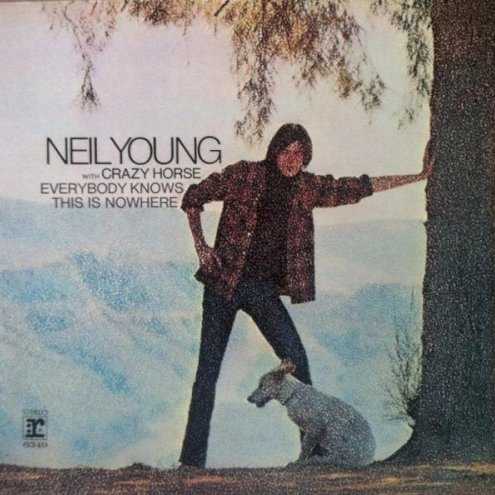 | Album: 1 of 19 Title: Everybody Knows This Is Nowhere Released: 1969-05-14 Tracks: 7 Duration: 40:30 Scroll: Up Down Top Bottom 25% 50% 75% Spotify Wikipedia Allmusic AlbumCover | 1 Cinnamon Girl (03:00) 2 Everybody Knows This Is Nowhere (02:28) 3 Round & Round (It Won’t Be Long) (05:53) 4 Down by the River (09:16) 5 The Losing End (When You’re On) (04:07) 6 Running Dry (Requiem for the Rockets) (05:36) 7 Cowgirl in the Sand (10:06) |
| Everybody Knows This Is Nowhere : Allmusic album Review : Neil Youngs second solo album, released only four months after his first, was nearly a total rejection of that polished effort. Though a couple of songs, "Round Round (It Wont Be Long)" and "The Losing End (When Youre On)," shared that albums country-folk style, they were altogether livelier and more assured. The difference was that, while Neil Young was a solo effort, Everybody Knows This Is Nowhere marked the beginning of Youngs recording association with Crazy Horse, the trio of Danny Whitten (guitar), Ralph Molina (drums), and Billy Talbot (bass) that Young had drawn from the struggling local Los Angeles group the Rockets. With them, Young quickly cut a set of loose, guitar-heavy rock songs -- "Cinnamon Girl," "Down by the River," and "Cowgirl in the Sand" -- that redefined him as a rock & roll artist. The songs were deliberately underwritten and sketchy as compositions, their lyrics more suggestive than complete, but that made them useful as frames on which to hang the extended improvisations ("River" and "Cowgirl" were each in the nine-to-ten-minute range) Young played with Crazy Horse and to reflect the ominous tone of his singing. Young lowered his voice from the near-falsetto employed on his debut to a more expressive range, and he sang with greater confidence, accompanied by Whitten and, on "Round Round," by Robin Lane. Everybody Knows This Is Nowhere was breathtakingly different when it appeared in May 1969, both for Young and for rock in general, and it reversed his commercial fortunes, becoming a moderate hit. (Youngs joining Crosby, Stills & Nash the month after its release didnt hurt his profile, of course.) A year and a half after its release, it became a gold album, and it has since gone platinum. And it set a musical pattern Young and his many musical descendants have followed ever since; almost 30 years later, he was still playing this sort of music with Crazy Horse, and a lot of contemporary bands were playing music clearly influenced by it. | ||
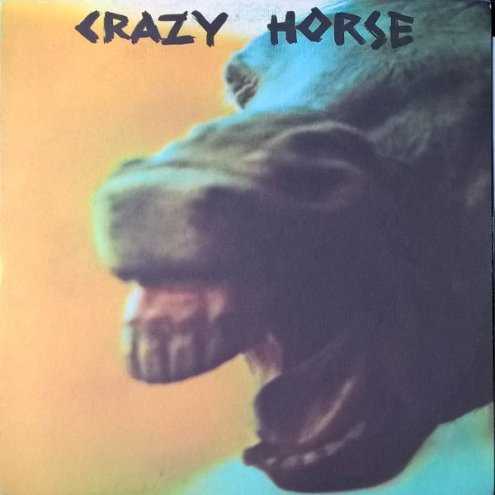 | Album: 2 of 19 Title: Crazy Horse Released: 1971-02 Tracks: 11 Duration: 39:22 Scroll: Up Down Top Bottom 25% 50% 75% Spotify Allmusic Wikipedia AlbumCover | 1 Gone Dead Train (04:09) 2 Dance, Dance, Dance (02:13) 3 Look at All the Things (03:15) 4 Beggars Day (04:32) 5 I Don’t Want to Talk About It (05:19) 6 Downtown (03:15) 7 Carolay (02:52) 8 Dirty, Dirty (03:32) 9 Nobody (02:38) 10 Ill Get By (03:11) 11 Crow Jane Lady (04:24) |
| Crazy Horse : Allmusic album Review : Since Crazy Horse first came to public attention as the backing band for Neil Young in concert and on his albums Everybody Knows This Is Nowhere and After the Gold Rush, it makes sense to expect that the band on its own would play something similar to the hard guitar rock and country-rock heard on those albums, albeit without Youngs distinctively quirky singing and songwriting, and that is what one hears to a large extent on the debut album Crazy Horse. (Although this is their first recording under that name, core members Danny Whitten, Billy Talbot, and Ralph Molina have appeared previously on record as part of the doo wop group Danny & the Memories and the rock band the Rockets.) But there is more going on than that. Also joining in, as singers and songwriters as well as sidemen, are veteran arranger/producer Jack Nitzsche and guitarist Nils Lofgren, while Ry Cooder adds slide guitar to a number of tracks. The result is a varied group of songs that range in style from rock and country to blues and folk. The overall quality of those songs is quite high, starting with Nitzsche and Russ Titelmans "Gone Dead Train," previously heard being sung by Randy Newman on the soundtrack to Performance. (Nitzsche and Titelman also contribute the pop-ish "Carolay.") The country hoedown "Dance, Dance, Dance" is a good Young cast-off, while the driving "Beggars Day" and "Nobody" were penned by Lofgren. These contributions serve as the supporting material for Whittens songs, however, as his five numbers are among the albums best, whether hes rocking out on the ominous "Downtown" (which appears to be about scoring dope) or sadly crooning the heartbreaking ballad "I Dont Want to Talk About It." (After being revived by Rod Stewart on Atlantic Crossing in 1975, the song was a chart single for him and went on to become a minor standard with covers by Rita Coolidge, Everything But the Girl, and Ian Matthews, among others.) Crazy Horse made the case for Whitten as a major talent and for the band as a strong act apart from Young. | ||
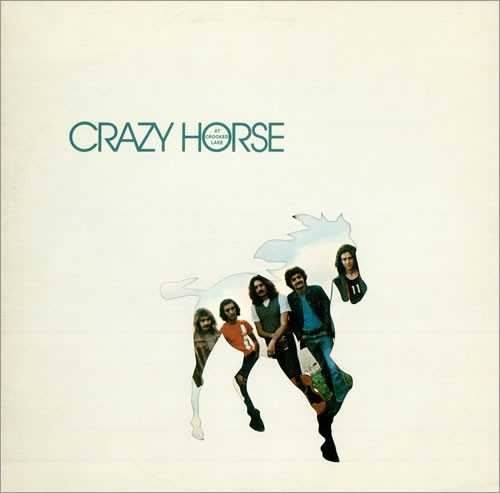 | Album: 3 of 19 Title: At Crooked Lake Released: 1972-10 Tracks: 10 Duration: 34:08 Scroll: Up Down Top Bottom 25% 50% 75% Spotify Wikipedia Allmusic AlbumCover | 1 Rock and Roll Band (03:10) 2 Love Is Gone (03:15) 3 We Ride (03:08) 4 Outside Lookin In (02:05) 5 Dont Keep Me Burning (04:17) 6 Vehicle (03:38) 7 Your Song (02:42) 8 Lady Soul (03:35) 9 Dont Look Back (03:28) 10 85 El Pasos (04:50) |
| At Crooked Lake : Allmusic album Review : After releasing a promising debut album, Crazy Horse, in February 1971, Neil Youngs former backup band was reduced to its rhythm section of bassist Billy Talbot and drummer Ralph Molina, who enlisted three new members -- George Whitsell, Greg Leroy, and John Blanton -- to make Loose (January 1972), essentially the work of a different, inferior group. Nine months later, 40 percent of the membership of Crazy Horse has turned over again for the bands third album, At Crooked Lake, with the departure of Whitsell and Blanton and the arrival of Rick and Michael Curtis. This lineup turns out to be better than the one that made Loose, but still nowhere near the one that made Crazy Horse. And, as fronted by yet another couple of lead singers and songwriters, it again seems like a different band. The Curtis brothers are competent performers, particularly Rick, who writes or co-writes five of the ten selections and sings in a slightly whiny voice while contributing rhythm guitar and banjo. Keyboardist Michael Curtis gets his name on a couple of tracks, and Leroy writes three, among them the attractive ballad "Your Song," while adding effective lead guitar and bottleneck playing. With the acoustic guitars strumming and occasional steel guitar interludes, this is country-rock in the style of Poco, sometimes, as in Leroys "85 El Pasos," going into straight country. But the songwriting still isnt as good as that of Poco, the Flying Burrito Brothers, the Eagles, or for that matter, the material banished Crazy Horse member Danny Whitten (who finally died of a drug overdose the month after this LP was released) contributed to the first album. | ||
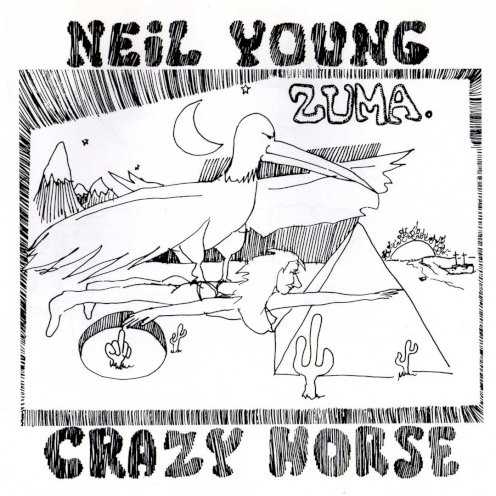 | Album: 4 of 19 Title: Zuma Released: 1975-11-10 Tracks: 9 Duration: 36:32 Scroll: Up Down Top Bottom 25% 50% 75% Wikipedia Allmusic AlbumCover | 1 Don’t Cry No Tears (02:35) 2 Danger Bird (06:54) 3 Pardon My Heart (03:47) 4 Lookin’ for a Love (03:16) 5 Barstool Blues (03:00) 6 Stupid Girl (03:12) 7 Drive Back (03:33) 8 Cortez the Killer (07:31) 9 Through My Sails (02:40) |
| Zuma : Allmusic album Review : Having apparently exorcised his demons by releasing the cathartic Tonights the Night, Neil Young returned to his commercial strengths with Zuma (named after Zuma Beach in Los Angeles, where he now owned a house). Seven of the albums nine songs were recorded with the reunited Crazy Horse, in which rhythm guitarist Frank Sampedro had replaced the late Danny Whitten, but there were also nods to other popular Young styles in "Pardon My Heart," an acoustic song that would have fit on Harvest, his most popular album, and "Through My Sails," retrieved from one of Crosby, Stills, Nash & Youngs abortive recording sessions. Young had abandoned the ragged, first-take approach of his previous three albums, but Crazy Horse would never be a polished act, and the music had a lively sound well-suited to the songs, which were some of the most melodic, pop-oriented tunes Young had crafted in years, though they were played with an electric-guitar-drenched rock intensity. The overall theme concerned romantic conflict, with lyrics that lamented lost love and sometimes longed for a return ("Pardon My Heart" even found Young singing, "I dont believe this song"), though the overall conclusion, notably in such catchy songs as "Dont Cry No Tears" and "Lookin for a Love," was to move on to the next relationship. But the albums standout track (apparently the only holdover from an early intention to present songs with historical subjects) was the seven-and-a-half-minute epic "Cortez the Killer," a commentary on the Spanish conqueror of Latin America that served as a platform for Youngs most extensive guitar soloing since his work on Everybody Knows This Is Nowhere. | ||
 | Album: 5 of 19 Title: Crazy Moon Released: 1978-11 Tracks: 18 Duration: 1:01:28 Scroll: Up Down Top Bottom 25% 50% 75% Spotify Allmusic Wikipedia AlbumCover | 1 She’s Hot (03:13) 2 Downhill (04:17) 3 Going Down Again (03:27) 4 Thunder & Lightning (03:56) 5 New Orleans (03:12) 6 That Day (03:19) 7 Lost and Lonely Feelin’ (03:13) 8 End of the Line (03:12) 9 Dancin’ Lady (03:24) 10 Love Don’t Come Easy (03:12) 11 Too Late Now (02:56) 12 Lady Soul (03:35) 13 Rock and Roll Band (03:10) 14 Pills Blues (04:03) 15 Let Me Go (03:49) 16 Stretch Your Skin (04:12) 17 Won’t You Say You’ll Stay (02:51) 18 Mr. Chips (02:22) |
| Crazy Moon : Allmusic album Review : Six years went by between the release of Crazy Horses third album, At Crooked Lake, and its fourth, Crazy Moon, and a lot of water went under the bridge in the meantime. Crazy Horse was, in effect, three different bands on its first three albums because the only constants were bassist Billy Talbot and drummer Ralph Molina as lead singers, songwriters, guitarists, and keyboardists came and went. The band name seemed to be retired by 1973, but in 1974 Talbot and Molina hooked up with singer/guitarist Frank Sampedro as Crazy Horse, leading to sessions with their erstwhile employer Neil Young that resulted in the Young/Crazy Horse album Zuma. At the same time, they recorded some Crazy Horse tracks that sat around for years, finally being finished off in the summer of 1978 for release here. The result is the first album since their debut, 1971s Crazy Horse, that sounds identifiable as the band that backs Young. In part, thats because Young himself is present on guitar on the tracks "Shes Hot," "Going Down Again," "New Orleans," "Downhill," and "Thunder and Lighting," and brings along his production associates David Briggs and Tim Mulligan as well as his pedal steel player Ben Keith. But its also because this is a well-realized effort on which Sampedro proves to be the first of the many successors to original guitarist Danny Whitten to fit in well with Molina and Talbot; because Molina and Talbot have upped their participation beyond providing the rhythm and some vocals, contributing to the songwriting as well; and because the guest musicians include a bevy of Crazy Horse alumni and friends including keyboardist Barry Goldberg (producer of the pre-Crazy Horse band the Rockets); Greg Leroy (Crazy Horse guitarist, 1971-1972); Bobby Notkoff (Rockets violinist); and Michael Curtis (Crazy Horse keyboardist, 1972). This is something of a Crazy Horse reunion effort, and it shows the band off at its best, or at least probably as good as it could be without co-founder Whitten, who died in 1972. | ||
![Allmusic album Review : Rust Never Sleeps, its aphoristic title drawn from an intended advertising slogan, was an album of new songs, some of them recorded on Neil Youngs 1978 concert tour. His strongest collection since Tonights the Night, its obvious antecedent was Bob Dylans Bringing It All Back Home, and, as Dylan did, Young divided his record into acoustic and electric sides while filling his songs with wildly imaginative imagery. The leadoff track, "My My, Hey Hey (Out of the Blue)" (repeated in an electric version at albums end as "Hey Hey, My My [Into the Black]" with slightly altered lyrics), is the most concise and knowing description of the entertainment industry ever written; it was followed by "Thrasher," which describes Youngs parallel artistic quest in an extended metaphor that also reflected the albums overall theme -- the inevitability of deterioration and the challenge of overcoming it. Young then spent the rest of the album demonstrating that his chief weapons against rusting were his imagination and his daring, creating an archetypal album that encapsulated his many styles on a single disc with great songs -- in particular the remarkable "Powderfinger" -- unlike any he had written before. rust_never_sleeps](../../images/neil_young_with_crazy_horse-rust_never_sleeps.jpg) | Album: 6 of 19 Title: Rust Never Sleeps Released: 1979-06-22 Tracks: 9 Duration: 38:26 Scroll: Up Down Top Bottom 25% 50% 75% Wikipedia Allmusic AlbumCover | 1 My My, Hey Hey (Out of the Blue) (03:47) 2 Thrasher (05:40) 3 Ride My Llama (02:30) 4 Pocahontas (03:24) 5 Sail Away (03:50) 6 Powderfinger (05:30) 7 Welfare Mothers (03:49) 8 Sedan Delivery (04:39) 9 Hey Hey, My My (Into the Black) (05:12) |
| Rust Never Sleeps : Allmusic album Review : Rust Never Sleeps, its aphoristic title drawn from an intended advertising slogan, was an album of new songs, some of them recorded on Neil Youngs 1978 concert tour. His strongest collection since Tonights the Night, its obvious antecedent was Bob Dylans Bringing It All Back Home, and, as Dylan did, Young divided his record into acoustic and electric sides while filling his songs with wildly imaginative imagery. The leadoff track, "My My, Hey Hey (Out of the Blue)" (repeated in an electric version at albums end as "Hey Hey, My My [Into the Black]" with slightly altered lyrics), is the most concise and knowing description of the entertainment industry ever written; it was followed by "Thrasher," which describes Youngs parallel artistic quest in an extended metaphor that also reflected the albums overall theme -- the inevitability of deterioration and the challenge of overcoming it. Young then spent the rest of the album demonstrating that his chief weapons against rusting were his imagination and his daring, creating an archetypal album that encapsulated his many styles on a single disc with great songs -- in particular the remarkable "Powderfinger" -- unlike any he had written before. | ||
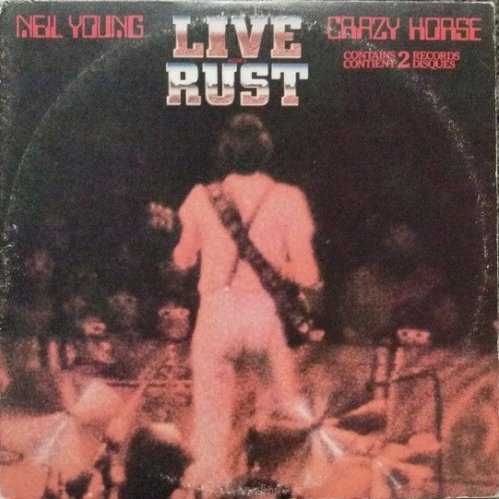 | Album: 7 of 19 Title: Live Rust Released: 1979-11-14 Tracks: 16 Duration: 1:12:51 Scroll: Up Down Top Bottom 25% 50% 75% Allmusic Wikipedia AlbumCover | 1 Sugar Mountain (04:53) 2 I Am a Child (02:53) 3 Comes a Time (03:05) 4 After the Gold Rush (03:38) 5 My My, Hey Hey (Out of the Blue) (04:11) 6 When You Dance I Can Really Love (03:39) 7 The Loner (04:51) 8 The Needle and the Damage Done (02:12) 9 Lotta Love (02:51) 10 Sedan Delivery (04:46) 1 Powderfinger (05:43) 2 Cortez the Killer (07:25) 3 Cinnamon Girl (03:21) 4 Like a Hurricane (07:10) 5 Hey Hey, My My (Into the Black) (04:59) 6 Tonight’s the Night (07:12) |
| Live Rust : Allmusic album Review : All the kudos Neil Young earned for Rust Never Sleeps he lost for Live Rust, the double-LP live album released four months later. Live Rust was the soundtrack to Youngs concert film Rust Never Sleeps (he had wanted to give it that title, but Reprise vetoed the idea, fearing confusion with the earlier album), and likewise was recorded October 22, 1978, at the Cow Palace in San Francisco. But much of the Rust Never Sleeps album had been recorded on the same tour, and Live Rust repeated four songs from that disc; besides, since Young had released the career retrospective Decade in 1977, critics felt he was unfairly recycling his older material and repeating his new material. In retrospect, however, Live Rust, now a single 74-minute CD, comes off as an excellent Neil Young live album and career summary, starting with the early song "Sugar Mountain" and running through then-new songs like "My My, Hey Hey (Out of the Blue)" and "Powderfinger." Young is effective in both his acoustic folksinger and hard-rocking Crazy Horse bandleader modes. The various distractions of the concert itself and the film, such as the pretentious props and cowled roadies, are absent, and whats left is a terrific Neil Young concert recording. | ||
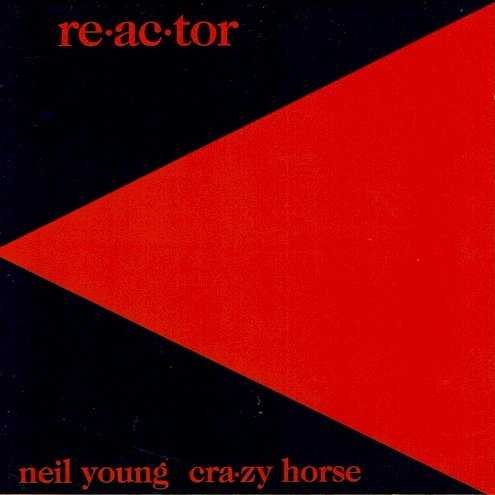 | Album: 8 of 19 Title: Re·ac·tor Released: 1981-10-28 Tracks: 8 Duration: 39:31 Scroll: Up Down Top Bottom 25% 50% 75% Wikipedia Allmusic AlbumCover | 1 Opera Star (03:36) 2 Surfer Joe and Moe the Sleaze (04:21) 3 T‐Bone (09:21) 4 Get Back on It (02:19) 5 Southern Pacific (04:14) 6 Motor City (03:13) 7 Rapid Transit (04:41) 8 Shots (07:45) |
| Re·ac·tor : Allmusic album Review : Neil Young employs Crazy Horse to help him bash out a guitar-drenched hard rock set made up of thrown-together material. The group plays fiercely, as usual, but the lyrics are sketchy, seemingly improvised (the nadir is the nine-minute "T-Bone," which consists of the lines "Got mashed potato/Aint got no t-bone" repeated over and over), and frequently cranky, as in "Motor City," which finds Young criticizing Japanese cars, and "Rapid Transit," which takes a belated swipe at new wave music while sounding like second-rate Talking Heads. For the second album in a row, Young seems to be just fulfilling his one-album-a-year record contract. The exception is the album-closing "Shots" (written by 1978), a more substantive and threatening song given a riveting performance. Later, it would be revealed that Young was finding time for his music while giving most of his attention to caring for his disabled son. Still, he might have been better advised to have suspended record-making for a few years instead of turning out half-baked efforts like this one. | ||
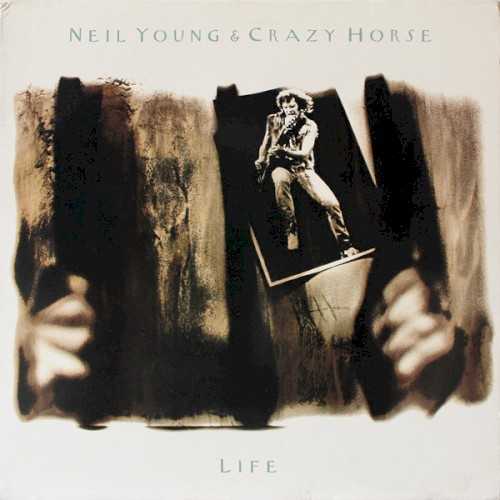 | Album: 9 of 19 Title: Life Released: 1987-06-30 Tracks: 9 Duration: 40:40 Scroll: Up Down Top Bottom 25% 50% 75% Wikipedia Allmusic AlbumCover | 1 Mideast Vacation (04:22) 2 Long Walk Home (04:56) 3 Around the World (05:28) 4 Inca Queen (08:01) 5 Too Lonely (02:49) 6 Prisoners of Rock ’n’ Roll (03:13) 7 Cryin’ Eyes (02:52) 8 When Your Lonely Heart Breaks (05:17) 9 We Never Danced (03:38) |
| Life : Allmusic album Review : In the fall of 1978, Neil Young undertook a North American tour with Crazy Horse, then added overdubs to new songs recorded on the tour for one of his best albums, Rust Never Sleeps. In the fall 1986, he did the same thing, but Life, Youngs first album with Crazy Horse since 1981s Re-ac-tor, was not one of his best albums. It was, however, better than most of the other albums he had made in the 1980s, and it was the first really interesting album hed made in a long time. Despite the return to Crazy Horse, Young continued to use some of the production techniques from Landing on Water, especially the loud drums and the synthesizers. But he mixed things up, including acoustic-based songs such as "Long Walk Home" (which recalled "After the Gold Rush") and "Inca Queen" (the third in his series of long, atmospheric songs about the Incas) and rockers like "Prisoners of Rock n Roll." The last, with its attacks on "record company clowns" and chorus "thats why we dont want to be good," seemed intended as the theme song for the Rusted-Out Garage Tour on which it was performed and served as a reminder that Young was still at odds with Geffen Records, which he left after releasing this album. Despite the criticism he had endured for his support of President Reagans military buildup, Young had foreign policy on his mind in the action-movie-in-song "Mideast Vacation" and in "Long Walk Home," which addressed military misadventures from Vietnam to Beirut. It could be argued that Young was repeating himself on much of this material and that the album was typically uneven. But Life was an encouraging step back to the tried and true for an exploratory artist who finally seemed to have realized that he had experimented too much for his own good. | ||
 | Album: 10 of 19 Title: Left for Dead Released: 1989 Tracks: 8 Duration: 31:12 Scroll: Up Down Top Bottom 25% 50% 75% Allmusic Wikipedia AlbumCover | 1 Left for Dead (04:19) 2 Child of War (03:34) 3 You and I (02:45) 4 Mountain Man (03:06) 5 In the Middle (04:55) 6 If I Ever Do (03:12) 7 World of Love (04:30) 8 Show a Little Faith (04:48) |
| Left for Dead : Allmusic album Review : In 1987, Crazy Horse mainstays Ralph Molina and Billy Talbot had a falling-out with their perennial employer, Neil Young, who, in his mercurial way, had decided to organize a horn-filled R&B; band called the Bluenotes. Crazy Horse guitarist Frank Sampedro stayed on with Young to play keyboards, but drummer Molina and bassist Talbot were not part of the new ensemble. They responded by organizing yet another new lineup of Crazy Horse. Left for Dead, the fifth Crazy Horse album in 18 years (and the first in 11), its title seeming an unmistakable allusion to the treatment received from Young, is also the fifth Crazy Horse album with a different frontline of musicians. Molina and Talbot are in place as ever, but there is a new lead singer, rhythm guitarist, and primary songwriter, Sonny Mone, and a new lead guitarist, Matt Piucci, formerly of the Rain Parade. Nevertheless, the style of the music much of the time strongly recalls Neil Young & Crazy Horse, particularly in the 1975-1987 Sampedro era. The opening tracks, "Left for Dead" and "Child of War," very much display the harsh, guitar-heavy approach of Young with Crazy Horse, albeit without Youngs distinctive voice and lyrics. Mone, like Young, has a high, strained tenor, but it couldnt be mistaken for Youngs, and of course his songwriting ability usually doesnt approach Youngs, even though he is clearly influenced by Young. (For example, he borrows the phrase "Tin soldiers and Nixon" from Youngs "Ohio" for "World of Love.") But the melodic, mid-tempo "I Could Never Lose Your Love" easily could be mistaken for a Young composition. And the primitive production (a press release admits that the disc sounds "like it was recorded in a mine shaft"), with lots of distortion and echo, also has that live-in-the-studio, warts-and-all Young & Crazy Horse feel. Thus, not for the first time in its career, Crazy Horse has made a Crazy Horse sound-alike record, which may be the fate of a "band" that is really just a rhythm section, or, to put it another way, a bunch of different bands playing in similar styles under one name. | ||
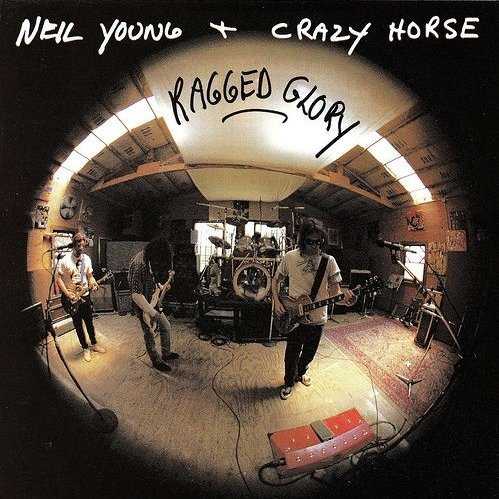 | Album: 11 of 19 Title: Ragged Glory Released: 1990-09-10 Tracks: 10 Duration: 1:02:42 Scroll: Up Down Top Bottom 25% 50% 75% Allmusic AlbumCover | 1 Country Home (07:06) 2 White Line (02:57) 3 F*!#in’ Up (05:54) 4 Over and Over (08:28) 5 Love to Burn (10:00) 6 Farmer John (04:14) 7 Mansion on the Hill (04:48) 8 Days That Used to Be (03:42) 9 Love and Only Love (10:18) 10 Mother Earth (Natural Anthem) (05:11) |
| Ragged Glory : Allmusic album Review : Having re-established his reputation with the musically varied, lyrically enraged Freedom, Neil Young returned to being the lead guitarist of Crazy Horse for the musically homogenous, lyrically hopeful Ragged Glory. The albums dominant sound was made by Youngs noisy guitar, which bordered on and sometimes slipped over into distortion, while Crazy Horse kept up the songs bright tempos. Despite the volume, the tunes were catchy, with strong melodies and good choruses, and they were given over to love, humor, and warm reminiscence. They were also platforms for often extended guitar excursions: "Love to Burn" and "Love and Only Love" ran over ten minutes each, and the album as a whole lasted nearly 63 minutes with only ten songs. Much about the record had a retrospective feel -- the first two tracks, "Country Home" and "White Line," were newly recorded versions of songs Young had played with Crazy Horse but never released in the 70s; "Mansion on the Hill," the albums most accessible track, celebrated a place where "psychedelic music fills the air" and "peace and love live there still"; there was a cover of the Premiers garage rock oldie "Farmer John"; and "Days That Used to Be," in addition to its backward-looking theme, borrowed the melody from Bob Dylans "My Back Pages" (by way of the Byrds arrangement), while "Mother Earth (Natural Anthem)" was the folk standard "The Water Is Wide" with new, environmentally aware lyrics. Young was not generally known as an artist who evoked the past this much, but if he could extend his creative rebirth with music this exhilarating, no one was likely to complain. | ||
![Allmusic album Review : Weld, Neil Youngs two-hour-plus double-CD chronicle of his 1991 Ragged Glory/Smell the Horse Tour with Crazy Horse, was received with only mild enthusiasm from Youngs fans and rock critics, perhaps because it seemed redundant. Such warhorses as "Like a Hurricane" and "Cortez the Killer" were making their fourth appearances on a Young album, and the five songs from the Ragged Glory album were basically unchanged from their studio versions. Containing only 16 tracks, the albums songs averaged over seven and a half minutes in length, and that length was given over to extended guitar improvisations, which often were filled with feedback and distortion. Where Youngs previous double live album, Live Rust, which bore some similarities to this one, was a career retrospective including some acoustic numbers, Weld was all electric rock with Crazy Horse. The one previously unreleased song was a Gulf War-era cover of Bob Dylans "Blowin in the Wind," complete with gunshots and exploding bombs. In retrospect, Weld seems like an excellent expression of one part of Youngs musical persona, putting some of his best hard rock material onto one album. [Initially, Weld was released in a 25,000 copy limited-edition called Arc Weld (Reprise 26746) containing a third disc made up of guitar feedback and called "Arc."] weld](../../images/neil_young_with_crazy_horse-weld.jpg) | Album: 12 of 19 Title: Weld Released: 1991-10-18 Tracks: 17 Duration: 2:36:47 Scroll: Up Down Top Bottom 25% 50% 75% Allmusic Wikipedia AlbumCover | 1 Hey Hey, My My (Into the Black) (05:42) 2 Crime in the City (06:32) 3 Blowin in the Wind (06:49) 4 Welfare Mothers (07:04) 5 Love to Burn (10:01) 6 Cinnamon Girl (04:45) 7 Mansion on the Hill (06:14) 8 F*!#in Up (07:09) 1 Cortez the Killer (09:46) 2 Powderfinger (05:58) 3 Love and Only Love (09:17) 4 Rockin in the Free World (09:22) 5 Like a Hurricane (14:00) 6 Farmer John (05:00) 7 Tonights the Night (08:45) 8 Roll Another Number (05:19) 1 Arc (34:58) |
| Weld : Allmusic album Review : Weld, Neil Youngs two-hour-plus double-CD chronicle of his 1991 Ragged Glory/Smell the Horse Tour with Crazy Horse, was received with only mild enthusiasm from Youngs fans and rock critics, perhaps because it seemed redundant. Such warhorses as "Like a Hurricane" and "Cortez the Killer" were making their fourth appearances on a Young album, and the five songs from the Ragged Glory album were basically unchanged from their studio versions. Containing only 16 tracks, the albums songs averaged over seven and a half minutes in length, and that length was given over to extended guitar improvisations, which often were filled with feedback and distortion. Where Youngs previous double live album, Live Rust, which bore some similarities to this one, was a career retrospective including some acoustic numbers, Weld was all electric rock with Crazy Horse. The one previously unreleased song was a Gulf War-era cover of Bob Dylans "Blowin in the Wind," complete with gunshots and exploding bombs. In retrospect, Weld seems like an excellent expression of one part of Youngs musical persona, putting some of his best hard rock material onto one album. [Initially, Weld was released in a 25,000 copy limited-edition called Arc Weld (Reprise 26746) containing a third disc made up of guitar feedback and called "Arc."] | ||
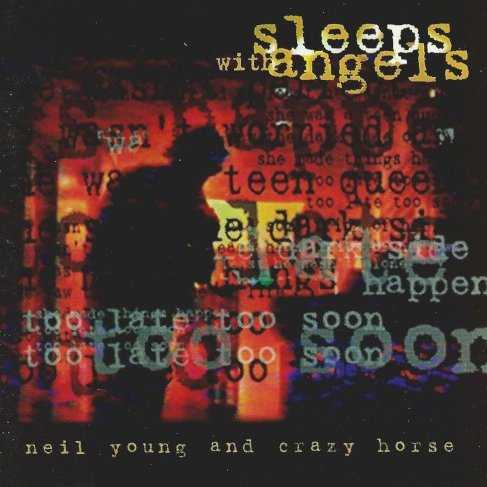 | Album: 13 of 19 Title: Sleeps With Angels Released: 1994-08-16 Tracks: 12 Duration: 1:02:48 Scroll: Up Down Top Bottom 25% 50% 75% Wikipedia Allmusic AlbumCover | 1 My Heart (02:44) 2 Prime of Life (04:04) 3 Driveby (04:44) 4 Sleeps With Angels (02:46) 5 Western Hero (04:00) 6 Change Your Mind (14:39) 7 Blue Eden (06:23) 8 Safeway Cart (06:32) 9 Train of Love (03:59) 10 Trans Am (04:07) 11 Piece of Crap (03:15) 12 A Dream That Can Last (05:29) |
| Sleeps With Angels : Allmusic album Review : Though it once again reunites him with Crazy Horse and includes such typical rock workouts as the lengthy "Change Your Mind" and the raucous "Piece of Crap," Sleeps With Angels is more musically varied than most of Neil Youngs albums with his erstwhile backup group, ranging from piano-based ballads like the album opener, "My Heart," and closer, "A Dream That Can Last," which might have fit on After the Gold Rush, to the country-folk "Train of Love," which sounds like a leftover from Harvest Moon, and the hard-edged grunge of the title track. The Crazy Horse influence comes in the songs structural simplicity and the unpolished playing. Though musically diverse, Sleeps With Angels is a song cycle in which Young repeats the same themes and images. To put it simply, the album is about death, presumably primarily the suicide of Nirvanas Kurt Cobain, which occurred while it was being recorded. From "My Heart," which declares, "Its not too late" and "Somehow, someone has a dream come true," to "A Dream That Can Last," which declares, "Theres a better life for me someday," Young begins and ends with a shaky, uncertain optimism, even though his language is riddled with references to violence, especially gunfire, and desperation. As in the albums title, even the references to sleep and dreams are about death. Young repeats some of the same lines from song to song and sometimes the same music ("Western Hero" and "Train of Love" have the same tune). The album thus has a tired, mournful feel that is both compelling and off-putting. Young had not investigated such forbidding territory since the days of Tonights the Night and On the Beach, and Sleeps With Angels is on a par with those often harrowing works. | ||
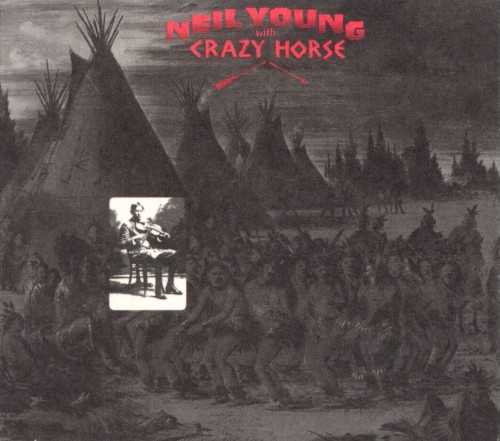 | Album: 14 of 19 Title: Broken Arrow Released: 1996-07-02 Tracks: 9 Duration: 53:42 Scroll: Up Down Top Bottom 25% 50% 75% Wikipedia Allmusic AlbumCover | 1 Big Time (07:26) 2 Loose Change (09:10) 3 Slip Away (08:36) 4 Changing Highways (02:23) 5 Scattered (Let’s Think About Livin’) (04:13) 1 This Town (03:01) 2 Music Arcade (04:01) 3 Baby What You Want Me to Do (08:08) 4 Interstate (06:40) |
| Broken Arrow : Allmusic album Review : In many ways, Broken Arrow follows the same path as Neil Youngs other 90s albums with Crazy Horse. Broken Arrow floats on waves of lumbering guitars and cascading feedback, ebbing and flowing with winding solos and drifting melodies. In a typical display of artistic perversion, Young has front-loaded the album with three epics with a combined running time of just over 25 minutes. Following the three epic-length songs come four concise tunes that range from the country-rock stomp of "Changing Highways" to the reflective "Music Arcade." Like the three songs that preceded them, these songs are uneven, with hazy melodies and underdeveloped lyrics. Finally, a long, live workout of Jimmy Reeds "Baby, What You Want Me to Do" -- which sounds like it was taken from an audience recording -- is tacked onto the end of the album. Although the song is a standout, it raises the question: what is the purpose of Broken Arrow? The album floats from song to song, with the guitars drowning out the sound of Youngs voice. There are some fine songs buried amid the long jams, but the album is directionless, and that lack of direction never manages to develop a consistent emotional tone. | ||
 | Album: 15 of 19 Title: Year of the Horse Released: 1997-06-17 Tracks: 12 Duration: 1:24:22 Scroll: Up Down Top Bottom 25% 50% 75% Wikipedia Allmusic AlbumCover | 1 When You Dance I Can Really Love (06:19) 2 Barstool Blues (09:02) 3 When Your Lonely Heart Breaks (05:04) 4 Mr. Soul (05:05) 5 Big Time (07:28) 6 Pocahontas (04:50) 7 Human Highway (04:07) 1 Slip Away (10:52) 2 Scattered (Lets Think About Livin) (04:00) 3 Danger Bird (13:34) 4 Prisoners of Rock n Roll (06:40) 5 Sedan Delivery (07:15) |
| Year of the Horse : Allmusic album Review : As Neil Youngs second double live album of the 90s, Year of the Horse could seem a little redundant to anyone who isnt a die-hard fan. After all, Weld was useful since it appeared ten years after the release of Live Rust, Young & Crazy Horses first double live album, and it captured them at their peak. Year of the Horse, however, appeared merely five years after Weld, and in between those two records, Young had only released two albums worth of material that suited these high-voltage, improvised performances. These factors didnt matter since Young decided to allow Jim Jarmusch to make a film documentary about his 1996 tour, and Year of the Horse is the album that was released to coincide with the movie. (Its not really a soundtrack, since these performances dont appear in the film.) It is true that there are many songs here that havent made Youngs previous live albums, but the performances themselves arent particularly remarkable -- they sound like tired, meandering variations of Weld. There are enough strong moments to make Year of the Horse worthwhile for die-hard fans, but its too predictable to appeal to anyone else. | ||
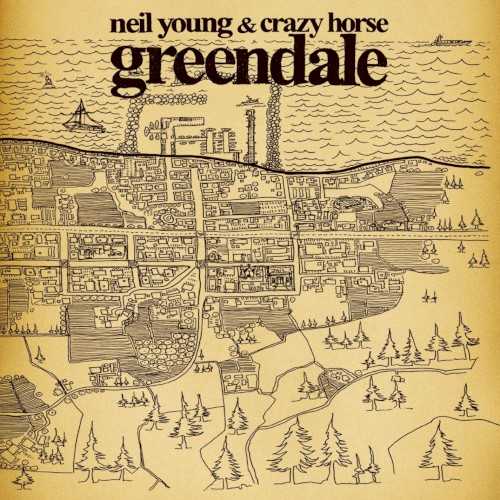 | Album: 16 of 19 Title: Greendale Released: 2003-08-18 Tracks: 10 Duration: 1:18:24 Scroll: Up Down Top Bottom 25% 50% 75% Wikipedia Allmusic AlbumCover | 1 Falling From Above (07:27) 2 Double E (05:18) 3 Devil’s Sidewalk (05:18) 4 Leave the Driving (07:14) 1 Carmichael (10:20) 2 Bandit (05:12) 3 Grandpa’s Interview (12:57) 4 Bringin’ Down Dinner (03:16) 1 Sun Green (12:03) 2 Be the Rain (09:13) |
| Greendale : Allmusic album Review : Prior to its release, Greendale received more attention than any Neil Young album in years, but it wasnt positive. Young hauled out his concept album -- about an extended family in a small town called Greendale, and how theyre torn apart by a murder -- to unsuspecting audiences, who by and large were not happy about spending anywhere from 55 to 85 dollars to hear a dense convoluted song cycle, complete with rambling narrative from Young, for the first hour of the show and not hearing many hits in the remainder of the set. Early in the summer of 2003, there was a brief blast of stories about this quasi-scandal, setting the stage for the late-summer release of the album: it got Young some needed press, and announced that unlike his last several albums, Young was actually trying this time around. Frankly, he needed a change. Ever since 1994s Sleeps With Angels -- or, if youre less charitable, 1990s Ragged Glory -- he had been drifting, playing with different groups, never quite mustering up enough energy to assemble a consistent set of songs whenever he headed into the studio. Here, the story and the setting give Young a hook for the record, a common theme that he can rally around, and the album benefits so much from that focus that it doesnt really matter that the story is convoluted beyond comprehension; the plot matters so much that it winds up not mattering at all. Close attention and repeated listens offer few rewards to the careful listener, because Young doesnt really say much of anything here, no matter how elaborately he says it. Learning more about the narrative -- whether its through the simultaneously released DVD of the Young-directed film Greendale, hearing his rambling on-stage between-song narratives, or reading apparent transcriptions of these ramblings in the liner notes -- illuminates the story slightly, even as declarations like "When I was writing this I had no idea what I was doing, so I was just as surprised as you are" emphasize the suspicion that theres not much meaning in the whole enterprise. All this doesnt really matter because Greendale works as a record -- it ebbs and flows and it holds together, playing as a unified whole on a level he hasnt approached since Ragged Glory. As Young says in the liner notes, these are things "you cant tell by listening to the songs, you have to listen to the instrumentals to get this," and while that is meant to apply to one of the many Crazy Horse-fueled meandering improvs, it really applies to the album as a whole since Greendale connects in its overall picture, not the details. Sometimes, such as the quietly eerie and affecting "Bandit," the songs stand apart from the concept, but usually the lyrics are too devoted to his winding narrative to be their own entities. Then again, Greendale was designed to be an interconnected song cycle, and if the narrative neither works nor signifies much, it nevertheless kept Young focused on the construction of the album, whether its giving the songs memorable hooks or finding ways to make the signature ramshackle vibe of Crazy Horse sound both fresh and appropriate for this tale. It all adds up to a very good record -- one that is interesting, and one that satisfies musically. It may not be a latter-day masterpiece on the level of Dylans Love and Theft, but it most surely is a comeback for an artist who seemed permanently adrift at sea. | ||
 | Album: 17 of 19 Title: Scratchy: The Complete Reprise Recordings Released: 2005 Tracks: 33 Duration: 2:04:01 Scroll: Up Down Top Bottom 25% 50% 75% Allmusic Wikipedia AlbumCover | 1 Gone Dead Train (04:09) 2 Dance, Dance, Dance (02:13) 3 Look at All the Things (03:15) 4 Beggars Day (04:32) 5 I Dont Want to Talk About It (05:20) 6 Downtown (03:15) 7 Carolay (02:52) 8 Dirty, Dirty (03:32) 9 Nobody (02:38) 10 Ill Get By (03:11) 11 Crow Jane Lady (04:24) 12 Hit and Run (02:42) 13 Try (03:18) 14 One Thing I Love (02:37) 15 Move (03:14) 16 All Alone Now (02:47) 17 All the Little Things (05:01) 18 Fair Weather Friend (02:42) 19 You Wont Miss Me (02:47) 20 Going Home (02:50) 21 I Dont Believe It (03:07) 22 Kind of Woman (04:25) 23 One Sided Love (03:12) 24 And She Wont Even Blow Smoke in My Direction (01:21) 1 Dirty, Dirty (alternate version) (03:56) 2 Scratchy (takes 1-3) (12:14) 3 Dear Song Singer (03:11) 4 Downtown (unedited long version) (10:43) 5 Susies Song (takes 1-5) (06:15) 6 When You Dance You Can Really Love (02:50) 7 Radio Spot (01:11) 8 Cant Help Loving That Girl (02:12) 9 Dont Go (02:01) |
| Scratchy: The Complete Reprise Recordings : Allmusic album Review : Neil Young may not ever allow his Reprise outtakes to be released, but that doesnt mean theres not a lot of equally cool stuff from an orbit near his that cant be enjoyed -- and Rhino Handmade has hit a mother lode with this double-CD set, which offers a lot more than even dedicated Crazy Horse fans may expect. Thanks to their convoluted membership history and a series of label changes, Crazy Horse had one of the stranger release histories of almost any 70s band -- their stuff and, to some extent, their sound are all over the map. Scratchy: The Complete Reprise Recordings makes a strong case, however, for the primacy of the first lineup and their work on Reprise, assembling all of their released work for the label plus the equivalent of an albums worth of outtakes and radio spots, and two tracks by Danny & the Memories, the group that preceded the formation of Crazy Horse by five years or so. The groups self-titled debut album has bounced in and out of print for the last 34 years, but here its been remastered with the kind of attention that makes it sound like one is hearing it for the first time -- the close sound of the acoustic guitars on "I Dont Want to Talk About It" and the roaring electric instruments on "Gone Dead Train," "Dance, Dance, Dance," and "Downtown" are impressive to these ears, the harder-rocking numbers now displaying the raw power and impact that the group exuded on-stage; the remastering job has undone the inevitable flattening process that went into the vinyl release, so that Billy Talbots bass, in particular, now gets a killer showcase, and Jack Nitzsches piano on "Carolay" gets as much play as the massed acoustic guitars that carry the rhythm figure at the center of the song. Whats more, the crispness of the sound has brought the singing out in vivid detail -- if the LP could have sounded this bracing and powerful, this band might well have seen the success it deserved. The second half of the first CD is filled out with the tracks off of their second album, Loose; thanks to the ensuing lineup changes that took place, theyre a bit of a letdown after the 11 gems from Crazy Horse, though not bad on their own terms -- the group plays from less melodic strength and raw inventiveness, but make up for it with a lot of enthusiasm and positive vibes in their sound, especially on the acoustic numbers such as the gorgeous "One Thing I Love" or "All Alone Now." The real treat, however, is the second disc, which opens with a string of extraordinary outtakes, including the title track -- the outtakes sound incredible and feature exceptional playing, and "Scratchy" by itself is worth the price of admission, 12 minutes of stunning electric interaction; and its followed by the gorgeous acoustic piece "Dear Song Singer," plus a long version of "Downtown"; the first Danny & the Memories cut, "Cant Help Loving That Girl," was, in its own time, a throwback to early-60s doo wop style, while the second, "Dont Go," was much more contemporary circa 1965. The set is attractively designed, with separate pockets for each disc and a beautifully designed booklet with extensive annotation, all in a very practical slipcase-style package. Its a bargain for any fan of this band or any of its members, and worth tracking down. | ||
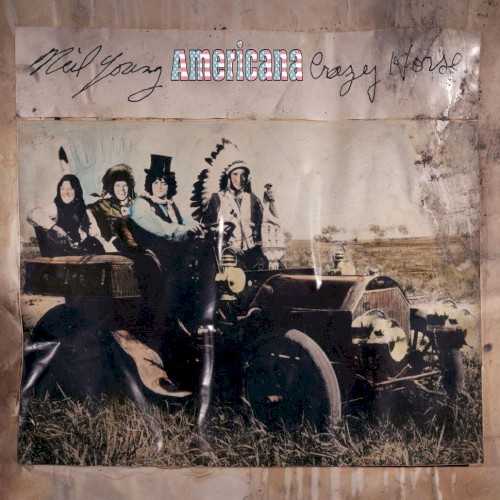 | Album: 18 of 19 Title: Americana Released: 2012-06-04 Tracks: 11 Duration: 56:55 Scroll: Up Down Top Bottom 25% 50% 75% Spotify AlbumCover | 1 Oh Susannah (05:03) 2 Clementine (05:42) 3 Tom Dula (08:13) 4 Gallows Pole (04:15) 5 Get a Job (03:01) 6 Travel On (06:47) 7 High Flyin’ Bird (05:30) 8 Jesus’ Chariot (05:38) 9 This Land Is Your Land (05:26) 10 Wayfarin’ Stranger (03:07) 11 God Save the Queen (04:08) |
 | Album: 19 of 19 Title: Psychedelic Pill Released: 2012-10-26 Tracks: 9 Duration: 1:27:44 Scroll: Up Down Top Bottom 25% 50% 75% Spotify Allmusic Wikipedia AlbumCover | 1 Driftin’ Back (27:37) 2 Psychedelic Pill (03:28) 3 Ramada Inn (16:50) 4 Born in Ontario (03:49) 1 Twisted Road (03:29) 2 She’s Always Dancing (08:33) 3 For the Love of Man (04:14) 4 Walk Like a Giant (16:29) 5 Psychedelic Pill (alternate mix) (03:12) |
| Psychedelic Pill : Allmusic album Review : As it turns out, the lumbering Americana was merely an amateurish rehearsal for the reuniting Neil Young & Crazy Horse. Just a handful of months after that collection of schoolhouse folk tunes, the band released the mammoth Psychedelic Pill, Neils first-ever studio double-LP. Its not just the album itself that sprawls: Young rides Crazy Horse through long, long songs, kicking off the proceedings with the 27-minute "Driftin Back," a song that makes the nearly 17-minute "Ramada Inn" and 16:30 "Walk Like a Giant" look comparatively svelte. No matter how many three-minute palate cleansers surround these monoliths, theres no getting around the fact that these overdriven, overlong jams are a way of separating the men from the boys, leaving behind only those with the strength to stomach such a large, undiluted dose of the Horse. Fortunately, the band is sounding much more limber than it did on Americana, where it seemed like the group members were picking up their instruments for the first time in a decade, so they can keep things moderately enchanting as the rock rolls out with no end in sight. That heavy, churning, perpetual motion is whats unique about Young & Crazy Horse, and Psychedelic Pill provides an abundance of it, but this feels different than their skronk-fests of the past, lacking the ballast of Ragged Glory, the sinew of Rust Never Sleeps, or the crackling, kinetic energy of Arc Weld or Live Rust. Instead, this is the sound of a veteran band settling into their familiar frayed clothes, doing precisely what they do best and nothing more. An air of tempered nostalgia permeates the album, evident not only in the unapologetic 70s grind of the band but in Youngs lyrics, which fuzzily rhapsodize about "Drifting Back" and the first time he heard "Like a Rolling Stone." Unlike Dylan -- or many other of his baby boomer peers -- Young sounds like a defiant old coot pining for his past, which makes Psychedelic Pill yet another oddity in a catalog filled with them: its noise rock as comfort food. | ||